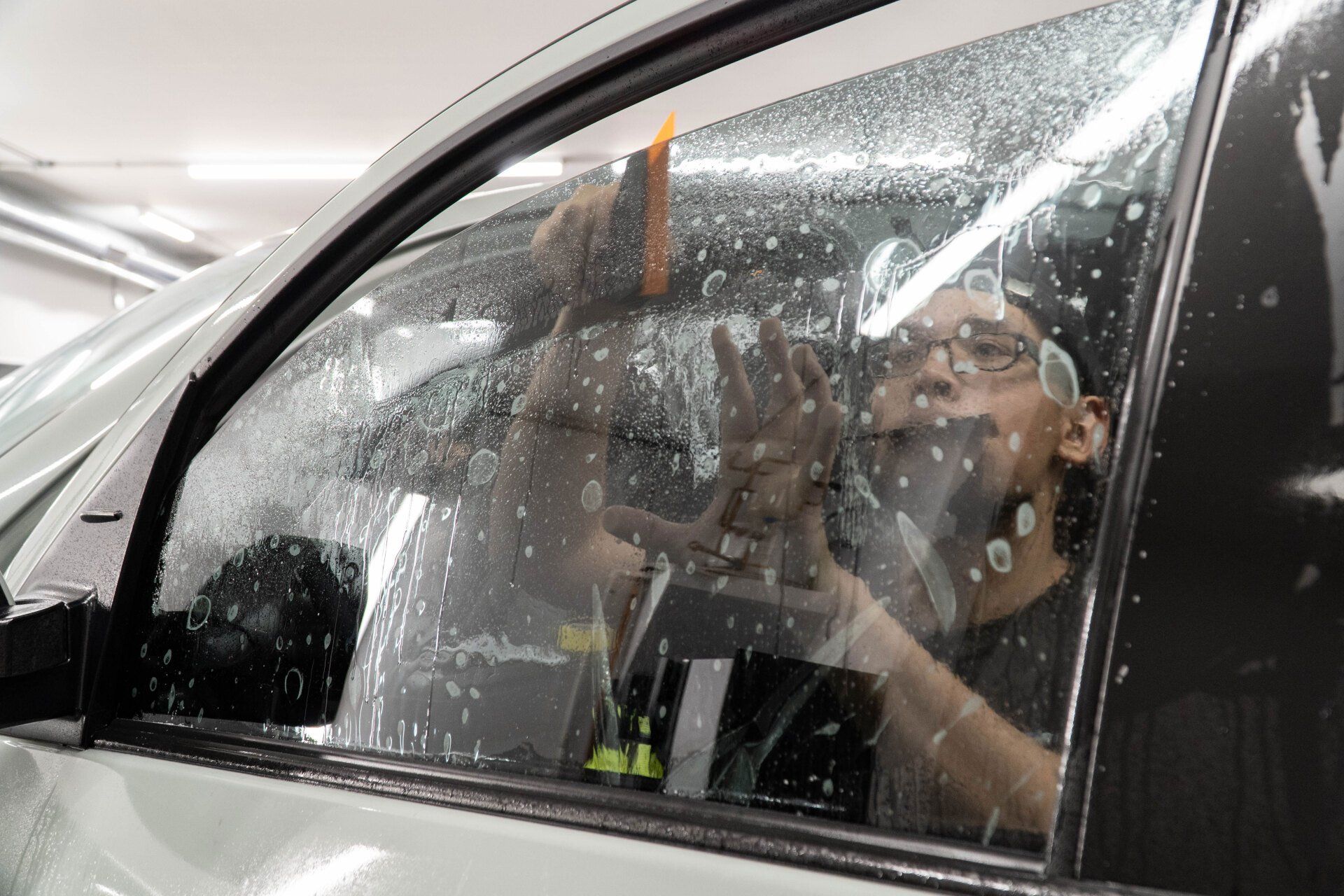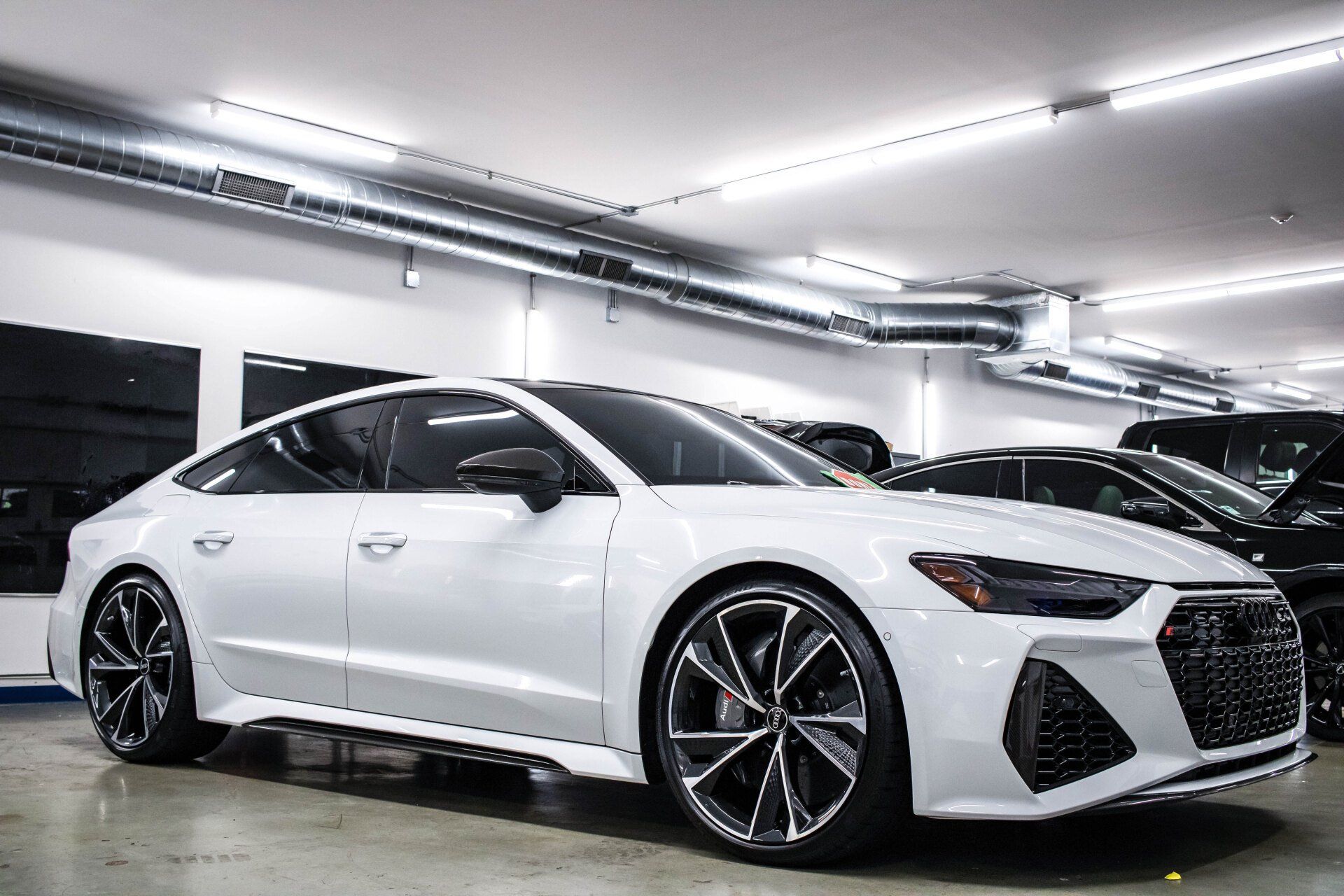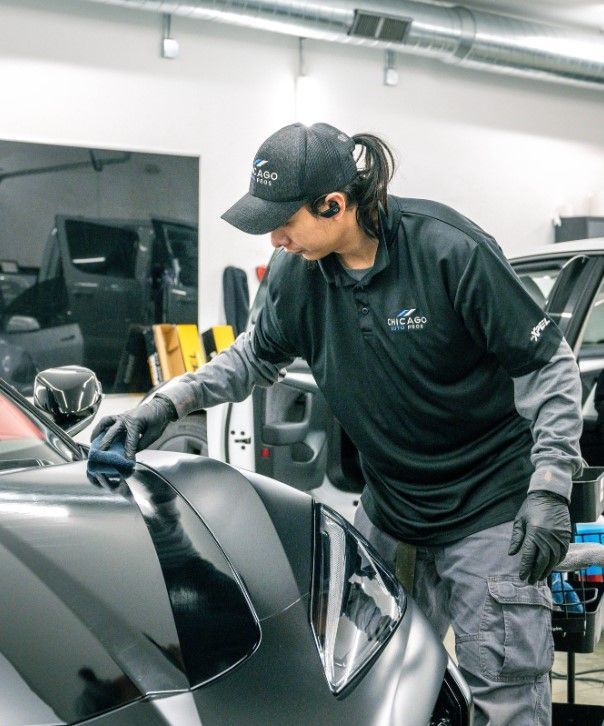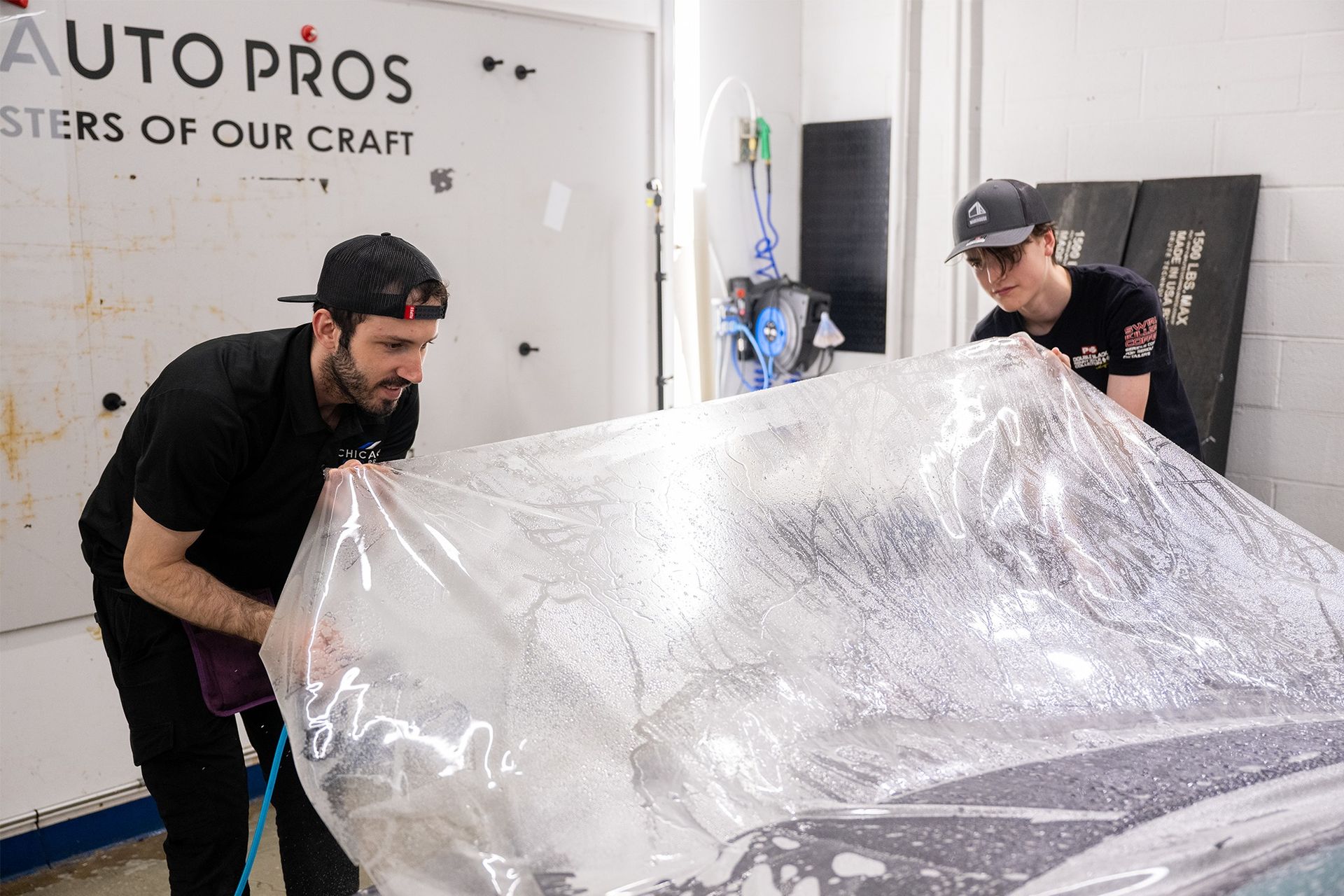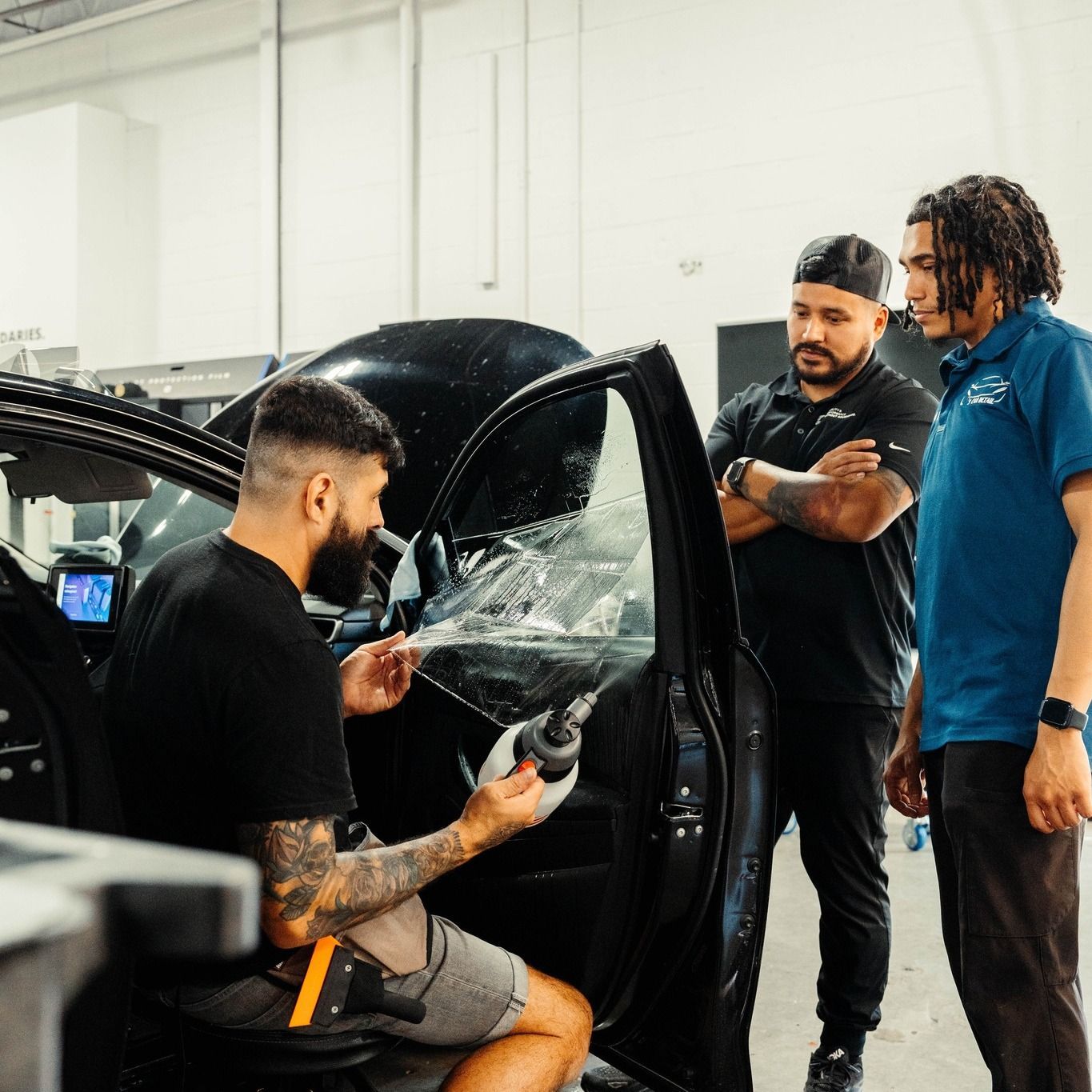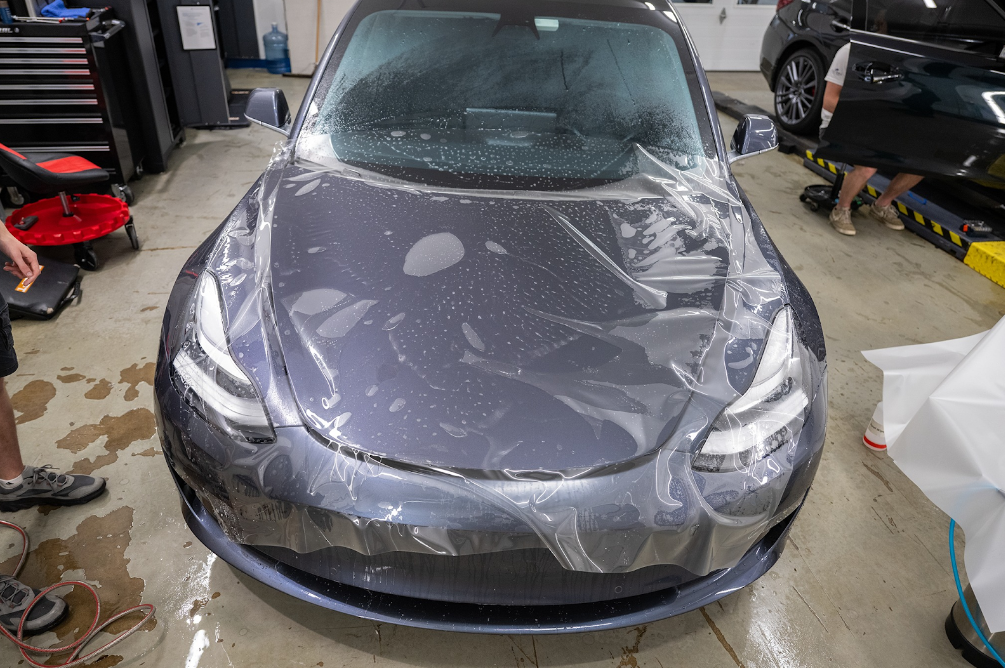How Car Window Tint Installation Improves Safety and Comfort
Installing car window tints is an effective way to make your vehicle safer. The tint reduces glare from the sun and other vehicles' headlights, reducing eye strain and making it easier to spot potential road hazards. What you might not expect is that a simple tint can also offer much-needed privacy, shielding your interior from prying eyes. This quiet comfort ensures you can go about your journey with unwavering focus on the road ahead. Finally, we are discussing UV protection.
The Benefits of Car Window Tinting for Safety
Car window tinting is more than just an aesthetic upgrade; it plays a crucial role in improving safety while driving. Let's break down the various safety benefits of car window tinting to understand why it's about more than just looks.
Firstly, reduced glare is one of the key safety benefits. When driving, especially during sunrise or sunset, excessive glare from the sun can be blinding and potentially dangerous. Window tinting helps mitigate this issue by reducing the amount of light that enters the car. This significantly enhances visibility and minimizes eye strain, allowing the driver to focus better on the road ahead.
Additionally, window tinting offers a crucial safety feature in the form of UV protection. Quality tint films have the ability to block up to 99% of harmful UV rays, protecting not only the car's occupants but also preventing early aging and skin damage from prolonged sun exposure while driving.
In addition to UV protection, heat reduction is another vital safety aspect. Excessive heat inside a car can lead to discomfort and distraction, particularly during long drives. Window tinting acts as a barrier against solar heat gain, reducing interior temperatures by up to 60°F. By creating a more comfortable driving environment, it helps prevent fatigue and potential heat-related health issues.
Enhancing privacy through window tinting also contributes to safety. It deters potential thieves by making it challenging for them to see inside the vehicle, decreasing the risk of break-ins. Additionally, it makes the driver less vulnerable to unwanted attention or potential attacks while parked in secluded locations.
The enhanced visibility that certain types of window tint enable is another noteworthy benefit. Contrary to popular belief, window tinting can enhance visibility under certain conditions by reducing glare from headlights and boosting contrast. This improved contrast allows drivers to react more swiftly to potential road hazards, ultimately contributing to safer driving conditions.
Car window tinting indeed offers a multitude of safety advantages that go beyond enhancing the appearance of your vehicle. It creates a safer, more comfortable driving experience by addressing prevalent concerns such as glare reduction, UV protection, heat management, privacy enhancement, visibility improvement, and security reinforcement.
Reduced Glare and Enhanced Visibility
Glare from the sun or oncoming headlights can be a real headache, literally and figuratively, for drivers. Tinted windows act like sunglasses for your car, reducing that blinding glare, so you can see better while driving.
By reducing glare, window tinting significantly enhances your ability to see the road clearly, improving your reaction time to potential hazards. Studies have shown that window tinting can reduce the risk of accidents caused by glare, with a potential decrease of up to 50% in glare-related accidents.
This isn't just about comfort; it's about safety too. On bright, sunny days, reduced glare means you won't be struggling to see or getting fatigued from the constant strain on your eyes. Similarly, during nighttime driving, those high-beam headlights from oncoming traffic are less likely to blind you, allowing for safer navigation through dark streets.
And let's not forget that reduced glare doesn't just apply to the driver; passengers benefit too! It creates a more comfortable atmosphere inside the vehicle for everyone.
Clearly, reduced glare and enhanced visibility are substantial advantages of car window tinting that directly contribute to a safer and more pleasant driving experience for both the driver and passengers alike.
Better UV protection and reduced heat
Car window tinting not only diminishes the sun's glare but also acts as a shield against harmful ultraviolet (UV) rays. According to the American Skin Cancer Foundation, prolonged exposure to UV radiation can cause skin damage and increase the risk of developing skin cancer. Window film can block up to 99% of these harmful rays, making it a crucial protective measure for those who spend a lot of time driving.
Furthermore, while we relish the warmth of the sun during outdoor activities, prolonged exposure to solar heat inside our vehicles can be uncomfortable and even hazardous. Professionally installed window tint can reduce up to 60% of solar heat, significantly decreasing solar heat gain and ensuring a cooler car interior, particularly during scorching weather.
Imagine stepping into your car on a scorching summer day. Without window tinting, the interior temperature could become unbearable, creating discomfort and posing health risks. By helping to maintain a more moderate temperature inside the vehicle, window tinting makes a substantial difference in enhancing comfort during extreme weather conditions—a soothing environment for drivers and passengers, allowing them to enjoy their journey without feeling like they are trapped inside an oven.
The combination of UV protection and reduced heat amplifies the benefits of car window tinting far beyond mere aesthetics or privacy concerns. This added layer of protection against harmful UV rays and extreme heat generates a noteworthy improvement in driver safety and comfort, reinforcing the importance of this valuable automotive investment.
With these insights in mind, it becomes evident that car window tinting serves as a dual shield, defending against both UV exposure and excessive heat buildup, thereby contributing to a safer, more enjoyable driving experience for all.
Legalities of Car Window Tinting
When it comes to car window tinting, the regulations can vary significantly between different regions. Different areas have specific laws dictating the darkness and reflectiveness of window tints to ensure safety and legal compliance on the road. Therefore, it's essential to be aware of the legal limits in your area to avoid potential fines or penalties.
Moreover, certain colors and materials used for tints may also be restricted. For example, red, gold, yellow, or black are not legal for tinting. Additionally, mirror-finish products or sprayed-on products are not allowed as they do not comply with state regulations.
It's also important to note that in many places, including Washington, there are medical exemptions allowed for special tinting needs. Individuals with medical conditions may apply for permission to use darker tints on their vehicle windows for health-related reasons.
Complying with these regulations not only keeps you on the right side of the law but also ensures that your vehicle remains safe and roadworthy. It's always wise to check with local authorities or qualified professionals to understand the specific rules and exceptions related to car window tints in your area.
Understanding these legal requirements is key to making informed decisions about your car window tinting and ensuring adherence to regulations while achieving your desired level of privacy and protection.
Darker Tints and Visibility Regulations
Window tints can give your car a sleek, stylish appearance while reducing glare and heat from the sun, but rules are in place to ensure that they don't compromise safety. Especially for the driver's side and front windows, there are limits to how dark tints can be. These restrictions are meant to prevent significant impairment of visibility, particularly at night when it's already more challenging to see clearly.
Specific Visibility Regulations
These regulations often focus on the Visible Light Transmission (VLT) percentage, indicating how much light can pass through the window; the higher the VLT percentage, the lighter the tint. In some places, laws require the driver's side and front windows to have a higher VLT percentage compared to the rear windows. This is because maintaining good visibility is essential for safe driving, especially when making turns or changing lanes.
It's worth noting that these regulations vary not only from state to state but even from one country or city to another. It's important to be aware of the specific tint regulations in your area, as non-compliance can result in fines or even having to remove the tint altogether.
These regulations not only serve to ensure driver safety but also contribute to overall road safety. Maintaining a clear line of sight is crucial for everyday driving tasks, and adhering to these window tinting visibility regulations helps maintain an optimal level of visibility for drivers and pedestrians alike.
Installation Process for Car Window Tinting
Installing window tint isn't just about sticking a dark film on your windows. Instead, it's a precise process that demands skill and attention to detail. Here, we'll walk through the typical steps involved in getting your car's windows tinted.
Steps Involved in the Installation Process
- Thorough Cleaning: Before the tint can be applied, the windows need to be completely clean. Any dirt, dust, or residue will show through the film and make it look messy. So, a professional installer will meticulously clean the windows inside and out to ensure a smooth application.
- Precise Cutting of the Tint Film: Each individual window needs its own piece of tint cut specifically to fit its size and shape perfectly. This part requires careful measuring, cutting, and shaping to ensure that the film aligns exactly with each window without any overhang or gaps.
- Meticulous Application: This is where experience and skill come into play. The installers will use special tools to carefully apply the film to each window, making sure to eliminate any bubbles or creases that can affect the appearance and performance of the tint.
It's really important that the tinting process is bubble-free because any imperfections can affect how well the film sticks to the glass, causing it to peel over time. A professional installer has techniques and tools to ensure a seamless finish that not only looks great but also lasts.
Overall, it's clear that installing car window tint involves critical steps, from cleaning to cutting and precise application. That's why it's highly recommended to leave this job to professionals. Their expertise ensures a high-quality finish and lasting results that you'll be pleased with for years to come. It's important to note that amateur installation can lead to bubbling, creasing, or even uneven application, which could result in costly reapplications or repairs in the future.
A Comprehensive Guide to Choosing the Right Tint for Your Car
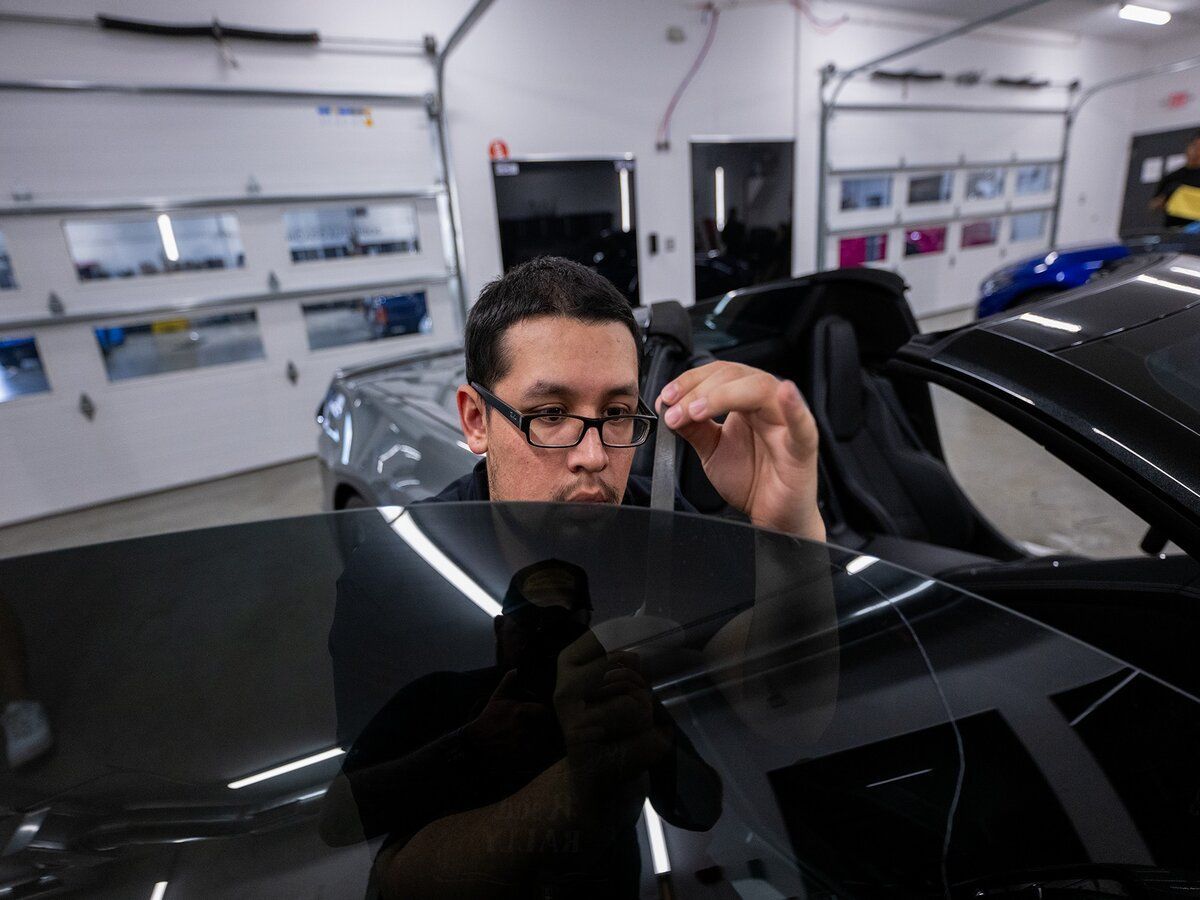
Choosing the right tint for your car is an important decision. It's not just about aesthetics; it's about finding the right balance of shading, UV protection, and heat rejection to suit your needs. The last thing you want is to end up with a tint that doesn't offer the level of privacy or visibility you desire.
Shading Percentage When selecting the right tint, the shading percentage matters. This refers to the amount of light allowed to pass through the tint. For instance, a 5% shade lets in only 5% of light and provides the most privacy, while a 50% shade allows 50% of light, offering better visibility from inside the vehicle. It's crucial to consider your local laws because some areas have regulations governing how dark you can tint your windows.
Type of Tint Film There are various types of tint films available, each offering different benefits.
- Dyed Film: This type of film prevents heat and provides good color stability but may not be as effective at blocking UV rays.
- Metalized Film: Known for its strength and durability, metalized film reflects heat away from the vehicle and offers good UV protection.
- Ceramic Film: Ceramic film provides excellent heat reduction properties without interfering with electronic signals while also blocking out UV rays effectively.
When considering tint films, it's essential to think not just about personal preferences but also practical requirements like heat reduction and UV protection.
Additional Features Some tints come with extra features like UV protection and heat rejection, enhancing your driving experience by providing a cooler cabin environment and protecting your skin from harmful UV rays. Considering these features adds an extra layer of value when choosing the right tint for your car.
For example, if you live in an area with scorching summers, a tint with high heat rejection capabilities can significantly improve your comfort while driving and help preserve your car's interior.
Visibility, Privacy, and Aesthetics Different tint options offer varying levels of visibility, privacy, and aesthetics.
- Visibility: Consider how well you want to see out of your windows during both day and night after applying the tint.
- Privacy: Determine how much privacy you desire when inside your vehicle.
- Aesthetics: Lastly, think about how you want your car to look with the addition of window tint.
By carefully considering these factors—shaded percentage, type of film, additional features, visibility, privacy, and aesthetics—you can make an informed decision that enhances both the functionality and style of your vehicle.
Armed with insights into choosing the right window tint for your car, let's now explore how window tinting impacts privacy and security within your vehicle.
How Car Window Tinting Affects Privacy and Security
When it comes to privacy and security, having tinted windows can significantly impact your driving experience. Let's consider how this works.
Tinted windows create a barrier between the inside of your vehicle and the outside world. This means that people passing by won't be able to see too well into your car.
For example, if you're carrying something valuable, thieves won't be able to spot it as easily, reducing the likelihood of a break-in. It also makes it harder for anyone with bad intentions to see who's in your car, thereby diminishing the driver's vulnerability to potential attackers.
But that's not all. Privacy is another significant benefit of having tinted windows. Whether you're driving through city streets or going on a road trip, you're part of the world outside your vehicle. Tinted windows give you a sense of seclusion from that world, providing an added level of discretion for you and your passengers.
Imagine being stuck in traffic after a long day at work. With tinted windows, you can have some personal space without feeling like everyone is looking in at you. It can really make a difference in how comfortable you feel in your car.
Privacy isn't just about shielding yourself from prying eyes; it also amounts to peace of mind. Being lost in private thoughts or having personal conversations while driving can be quite therapeutic, and tinted windows provide that extra layer of confidentiality.
By enhancing privacy and discouraging theft, car window tinting serves as both a practical and psychological advantage, creating an ambiance of safety and discretion within the vehicle.
The Final Look and Function of Your New Tint
Stepping into a car with a newly installed window tint is like seeing the world in a different light. The sleek, sophisticated appearance adds a touch of elegance to the overall aesthetic of the vehicle. The darkened windows not only create a sense of exclusivity but also exude an air of mystery that can instantly elevate the curb appeal.
From enhancing the sleekness of luxury vehicles to giving a sporty edge to everyday cars, the final tinted look has the power to uplift the visual appeal. It's like wearing sunglasses for your car! Not only does it look good, but it's also functional. A well-installed window tint helps block out harmful UV rays, keeps the interior cool, and reduces glare, making every ride more comfortable.
Moreover, the modern technologies used in professional window tinting ensure that you can enjoy these benefits without compromising visibility or breaking any legal regulations regarding tint darkness levels.
When professionally installed, window tints provide an instant upgrade in appearance and comfort while serving as a protective shield for both you and your vehicle's interior.
The added layer of protection against harmful UV rays ensures that not only do you and your passengers stay safe from skin damage but also that your car's interior upholstery and dashboard are shielded from fading and deterioration. This dual function of style and protection makes investing in professional window tinting truly worthwhile.
In conclusion, the final polished look and functional benefits of professionally installed window tints culminate in an elevated driving experience that prioritizes comfort, style, and safety—all rolled into one sleek package.
Enhance Your Driving Experience with Professional Window Tinting from Chicago Auto Pros
At Chicago Auto Pros, we understand the importance of enhancing your driving experience, which is why we offer professional window tinting services. Our team of trained technicians is well-versed in the latest tinting techniques and technologies, ensuring precise application and superior results. We only use the highest-quality window tint films from reputable manufacturers to ensure long-lasting performance and satisfaction. Our films offer excellent heat rejection, UV protection, and glare reduction, enhancing your driving comfort and protecting your interior from sun damage. Book now!
We Make Your Car Look Beautiful
Founded with an unquenchable desire for automotive perfection, Chicago Auto Pros is a leader in paint protection efforts and aesthetic vehicle detailing services in Chicago, Illinois. When you bring your automobile to our Chicago-based detailing shop, you are sure to experience unmatched integrity, customer service excellence, and above all, absolute automotive perfection from the inside out. Choose the right auto detailing team - choose Chicago Auto Pros!
Lombard Location
207a Eisenhower Ln S, Lombard, IL, United States
Glenview Location
2075 Johns Ct, Glenview, IL, 60025, United States
Additional Service Areas
Tesla & EV Detail Specialists
Services Offered
Quick Links
All Rights Reserved | Chicago Auto Pros



